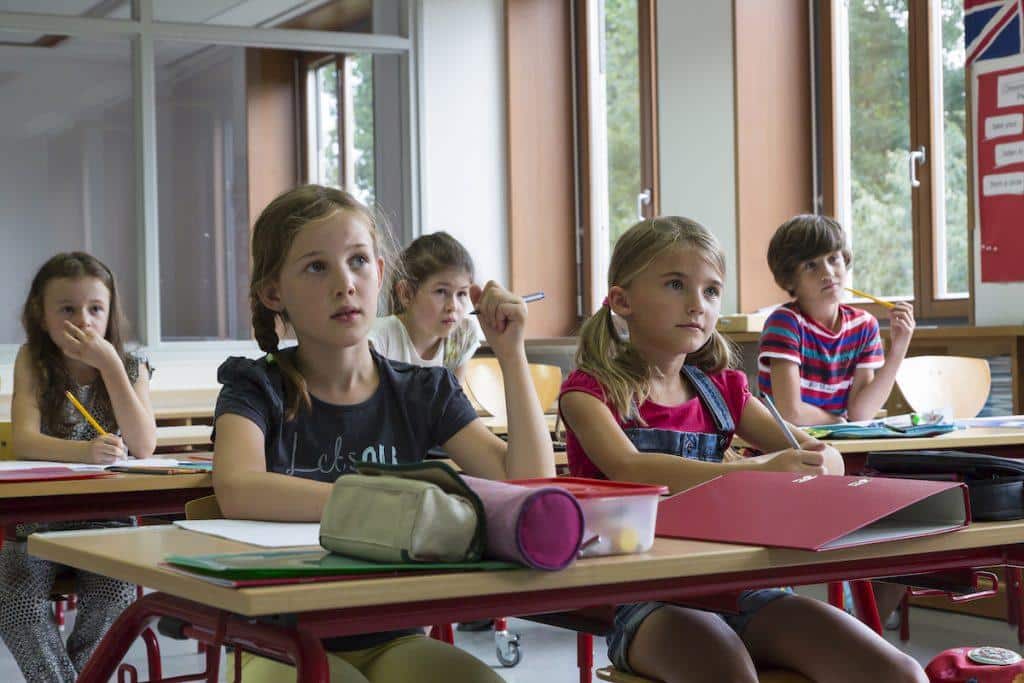What are mirrors, windows and sliding glass doors in the context of education?Books are often referred to as windows that let us see into other worlds. We can travel through time, space and across the globe without leaving the sofa. And as we travel, we learn about the world, and its people, while getting lost in powerful stories that can stir up a genuine connection to the characters described on the pages. But there is far more to books and literature than passive observation – they also offer insight and build bridges that cross the divide between cultures.
Table of Contents
- What Are Mirrors and Windows?
- Why Is Literature Like A Mirror?
- Sliding Glass Door
- Importance Of Mirrors
- Importance Of Windows
- Importance Of Sliding Glass Doors
- How To Create More Windows & Mirrors?
- Powerful Literacy Resources
- How To Create More Windows & Mirrors?
- Mirrors And Windows Summary

What Are Mirrors and Windows?
Professor Emerita of Education at The Ohio State University, Dr Rudine Sims Bishop, published an essay in 1990 focusing on multicultural literacy. She discussed the term “Mirrors and Windows” – first coined by Emily Style in 1988 – in a literary context. She stated that books are windows that allow readers to experience cultures different to their own, fostering diversity and inclusion. But on the other hand, books are mirrors that enable the reader to reflect on their own lives and affirm their values, cultural beliefs and sense of belonging.
Why Is Literature Like A Mirror?
Literature reflects society just as a mirror reflects an image. We see accurate depictions of human behavior relevant to the time, place and political or economic climate. Even if the literature is pure fantasy, the same reflections will appear time and time again. It shows the good, the bad and the ugly side of human nature and depicts the same emotional responses, prejudices and attitudes found in reality.
Sliding Glass Door
Dr Sims Bishop also stated that books are like sliding glass doors – where the reader can look through to observe but also let their imaginations take them through the door and into the world presented by the author. She believes that all books should offer children a sliding glass door, a mirror, and a window.
Importance Of Mirrors
While the idea of books being widows is widely accepted and almost obvious, the role of books as mirrors is critical for building self-acceptance and identity. And it is not limited to race or language – books can dig deeper and offer a sense of self-worth.
Value
When someone recognizes their own value system and culture within a book, it validates it and offers a sense of belonging. Likewise, children are more open to valuing each other’s differences and appreciating diversity when they identify themselves in a character, alongside other characters within the story – or in entirely different stories.
Sense
Childhood can be confusing – you know how your home life, family dynamic and traditions play out, and to you, that is just the way of the world. But then, as you get older, you realize it is not the same for everyone. You begin to question your sense of ‘normal’ and wonder who is right and who is wrong.
Mirror books are a fantastic tool to build a sense of pride and acceptance for what a child sees as their ‘normal’ while accepting that someone else’s ‘normal’ may not be the same.
For example, an only child who has grown up with a single mother may sense they are different when they visit a friend who has a mom, dad and two siblings. Another child feels they will never achieve anything significant due to a disability. However, suppose they are exposed to mirror books that are inclusive of children from different family dynamics and children with disabilities. In that case, they achieve a sense of self-acceptance and celebrate their differences rather than shy away from them. This is why there is a need for more black heroes, strong female characters and representation of LGBTQ to ensure all children feel that sense of belonging when getting lost in a good book.
Support
When a child is going through a difficult time, they can be comforted by the empathy they feel when they can relate to a character. For example, perhaps the main character’s parents are divorced. A child living through the breakdown of their parent’s marriage will understand that they are not alone. The same can be said about dealing with the death of a loved one, finding out you are adopted – any challenging situation that a child may face. The common ground will offer incredible support.
Increased Academic Involvement
Children learn and engage so much more when they feel strongly about the content. And at the end of the day, content is merely a vehicle to teach skills. So if they feel connected to the subject matter and are not outsiders looking in, they are more willing to immerse themselves. This leaves them more open to gaining the skills taught through the content.

Importance Of Windows
We can’t exist in a bubble. We need to know what is out there as it teaches us that there is no ‘normal’. Everyone has their own story and their unique background.
Understanding The Outside World
If a child living in the suburban USA reads a book set in the big city, on a farm or in a rural village, their understanding of the different ways people live grows significantly. And if they read about astronauts, scientists or people who have made a significant impact on the world, they begin to understand the possibilities that are out there, and it helps them discover their hopes and dreams for the future. It is also a way for them to understand different times and global events that are happening or have happened. It also allows them to see beyond their own existence and those in their immediate world.
Appreciation
We often take the positives in our life for granted, but reading about the experiences of others can create empathy, compassion and an appreciation for what we have. For example, when reading about a war-torn village, shipwrecked families or dysfunctional relationships, it offers a peek into a life that is entirely unlike our own and allows us to appreciate what we have. The same can be said for appreciating the efforts, attitudes and tenacity of characters who rise above-challenging situations and improve their conditions.
Reading about characters from different races and backgrounds also creates an appreciation for diversity. In addition, the reader builds a connection with the character they may not have built in real life, removing prejudices and stereotypical ideology.
Traditional Differences
Reading stories set in different countries or where the characters have other religions, cultural beliefs, and traditions is a wonderful way to create understanding and respect for our differences. The more exposure a reader gets to stories set outside of their everyday world, the more they grow in embracing diversity and respecting other viewpoints.
Importance Of Sliding Glass Doors
Sliding glass doors are an extension of the windows concept. They are essential to the reading process as they represent real growth.
Readers Can Relate
Sliding glass doors don’t limit the reader to simply viewing someone else’s experiences and way of life. Instead, the glass door allows them to immerse themselves in the story and become a part of the world described in the book. They relate to the characters when this happens, and their perspectives shift.
How To Create More Windows & Mirrors?
Windows and Mirrors allow everyone to bring their culture into the classroom and enable others to gain insight into someone else’s experience. Sharing in this environment is a safe space as everyone is afforded the same opportunity, and all the students gain new perspectives on other ways of life. It is also an opportunity to ask genuine questions and learn more about others respectfully.
Everyone’s world understanding is based on their experiences and previously established knowledge. Students are not empty vessels to be filled. Instead, they are filled to the brim with their own ideas, viewpoints and opinions. Using Mirrors and windows through literature can help work through preconceived notions, prejudices, ignorance or stereotypical concepts.
Powerful Literacy Resources
Ensuring your students have access to quality literature that serves as both mirrors and windows is essential. For example, while history books are valuable to any library, they must cover events and issues that tell a whole story and honor differing perspectives. In addition, the classroom or library should be filled with books that feature characters across different cultures and social economic situations and books that openly recognize mental health issues, disabilities and sexual identity.
Diversified Learning
Mirrors & Windows allows students to learn in a meaningful way. They make connections to stories and characters through their own experiences and knowledge. Diverse stories will enable them to think critically and compare what they are reading with their own lives.
Balanced Instructions
Implementing Mirrors & Windows in the curriculum exposes students to an abundance of diverse literature and ensures balanced instruction for speaking, reading, listening, writing, and language skills. Close Reading exercises, comprehension activities, discussions and debates lead students to engage deeply with texts and be able to move on to a range of activities.
Coordination
Students have an opportunity to find their writer’s voice, create their own narrative and use their stories to share their own cultures and experiences. In addition, books offer many opportunities to integrate vocabulary, grammar, and spelling without taking the focus off the bigger picture.
Community-Building
Once students gain empathy and understanding of other viewpoints, they recognize diversity within their own community and are more willing to expand their inner circle to include everyone. This sets the stage for community-building and a more inclusive way of working together.

How To Create More Windows & Mirrors?
Windows and Mirrors allow everyone to bring their culture into the classroom and enable others to gain insight into someone else’s experience. Sharing in this environment is a safe space as everyone is afforded the same opportunity, and all the students gain new perspectives on other ways of life. It is also an opportunity to ask genuine questions and learn more about others respectfully.
Everyone’s world understanding is based on their experiences and previously established knowledge. Students are not empty vessels to be filled. Instead, they are filled to the brim with their own ideas, viewpoints and opinions. Using Mirrors and windows through literature can help work through preconceived notions, prejudices, ignorance or stereotypical concepts.
Mirrors and Windows is a concept that should run throughout your curriculum and classroom practices. While literature is an incredible tool to focus on gaining perspective and reflecting, it can feature in many areas of learning.
It’s not just ethnic and cultural diversity that needs perspective. Even if we come from similar backgrounds, our core personalities sometimes view the world differently. Using mirrors and windows teaches respect for other viewpoints, opinions and ideas in all situations. Whether it is about personalities, cultural and religious differences, ethnicity or country of origin, this approach flows into students’ everyday encounters. It becomes their default way of viewing the world and acknowledging the value of other human beings.
Inspirations
If you are looking for diverse and inclusive books for your library, here is an excellent booklist for toddlers and preschoolers. For older children and teens, this expansive list will give you endless inspiration.
Mirrors and Windows FAQs
Mirrors and windows refer to books that either reflect the reader’s own identity, value system and background (mirror) or give insight into the essence, perspective and experience of others (window)
Educator Emily Styles first suggested that the curriculum act as mirrors and windows for students. It was expanded in 1990 by children’s literature researcher Rudine Sims Bishop, who linked it specifically to children’s books and used literature to create mirrors, windows and sliding doors.
Mirror books allow for self-reflection and instill a sense of belonging. The reader feels valued and connected when they can recognize their version of normal in a literary tale
Mirrors And Windows Summary
Reading a wide range of diverse and inclusive gives children the opportunity to see themselves (Mirrors), to learn about others and their experiences (Windows) and to immerse themselves in another place or time or another person’s experiences (Sliding glass doors). It builds empathy, fosters inclusion, celebrates differences and builds a sense of identity and self-worth.
“When there are enough books available that act as mirrors and windows for all our children, they will see that we can celebrate both our differences and our similarities because, together, they are what make us all human.”
Rudine Sims Bishop
